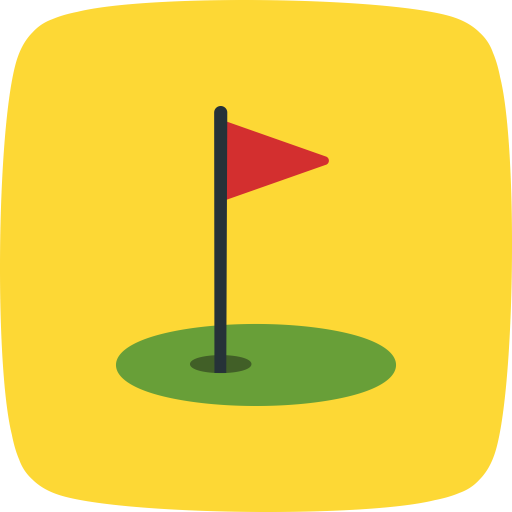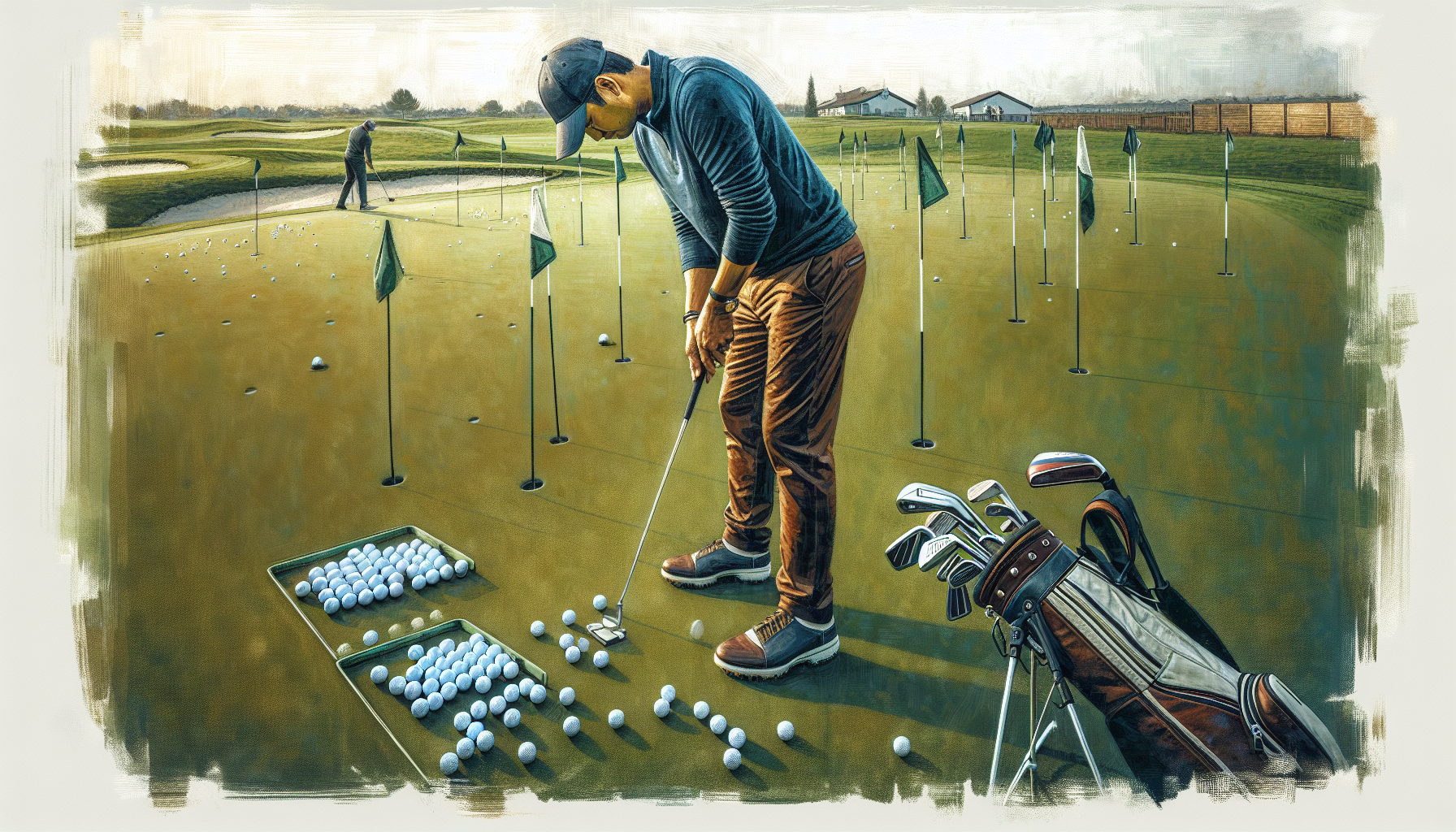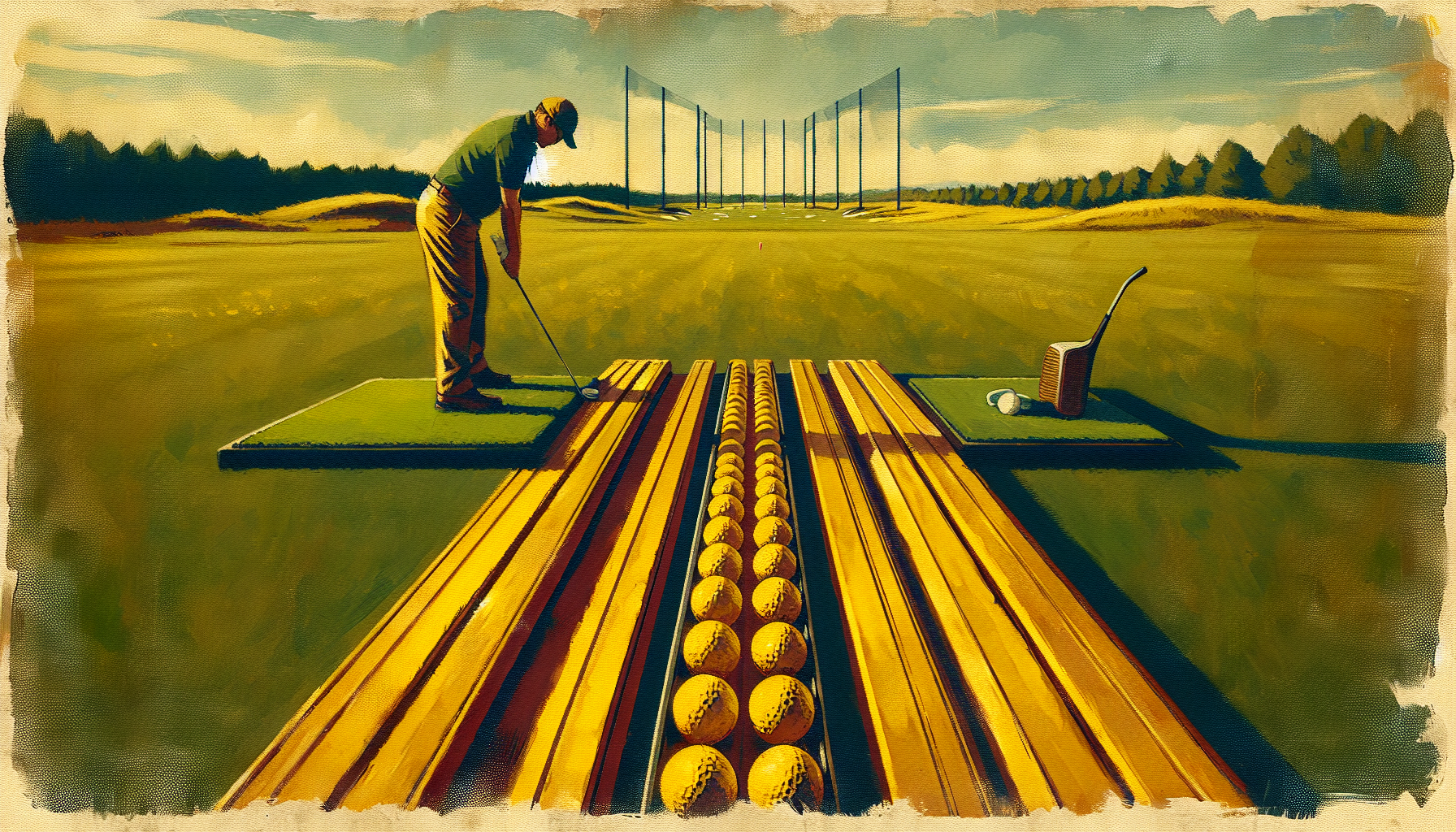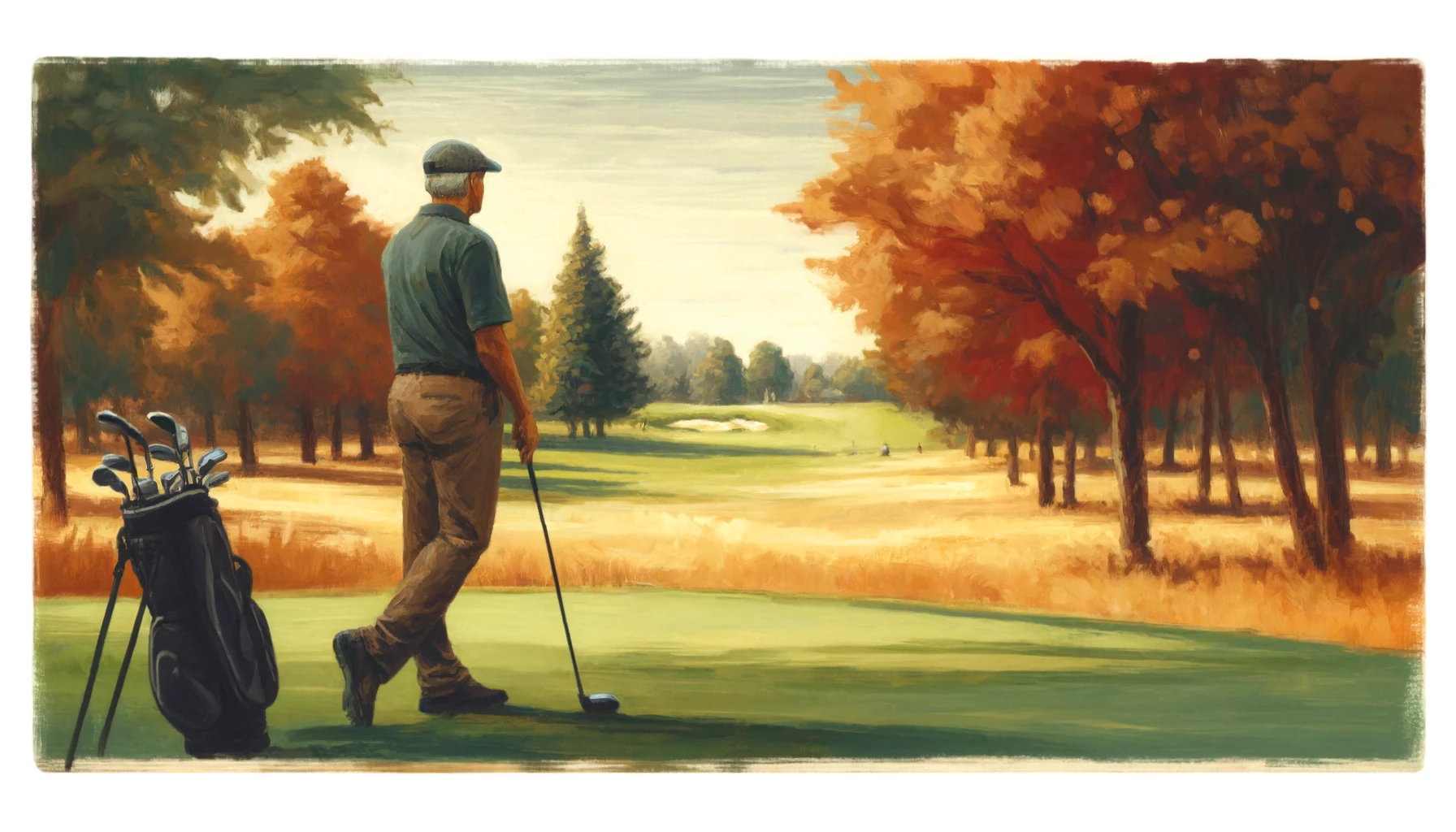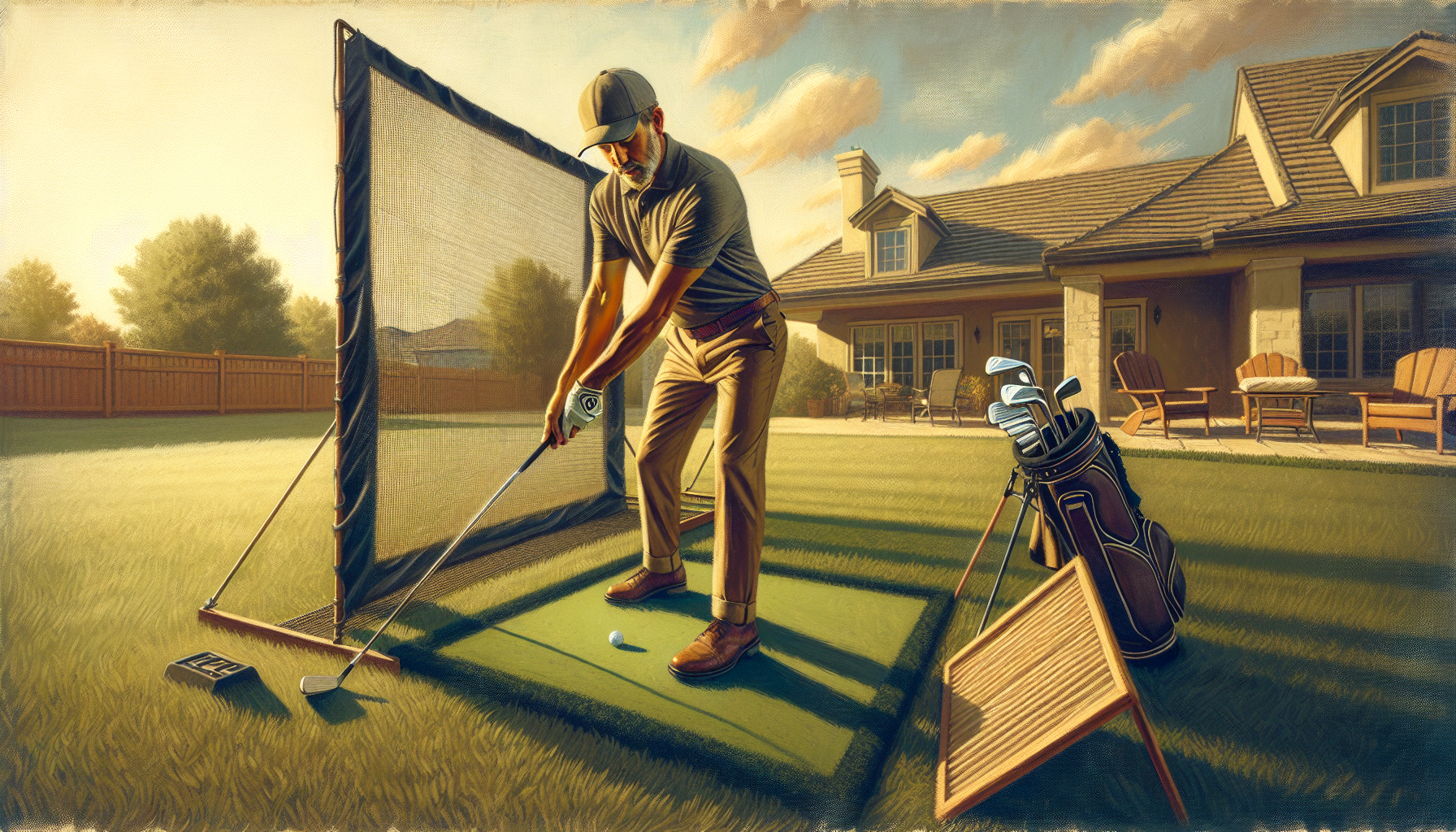Homemade Golf Training Aids That Work Better Than Store-Bought
As a weekend golfer who's probably spent more money on training aids than I care to admit, I've discovered something that might shock you: the best golf training aids are hiding in your house right now, and they work better than the expensive gadgets collecting dust in my garage.
After 25 years of weekend rounds with my buddies, I've learned that every expensive teaching aid started with a dirt-cheap prototype that, in many cases, was just as effective as the "Madison Avenue" version that consumers buy. The golf training aids market is expected to reach $417.2 million by 2030, but here's the thing – you don't need to contribute a penny to those profits to dramatically improve your game.
What finally clicked for me was realizing that the most effective practice happens when you can work on your fundamentals daily, not just when you remember to grab that expensive gadget from the garage. The household items I'm about to share have helped me drop 8 strokes off my weekend scores, and my buddies keep asking what my secret is.
Why Commercial Training Aids Are Overpriced and Overrated
Let me tell you something that might sting a little: the global golf training aids market was valued at USD 827.1 million in 2022, and according to LPGA Tour pro Cheyenne Woods and True Spec's Doug Smith, most of that money is wasted on gadgets that household items can replace.
The Brutal Truth About Training Aid Costs
Dr. T.J. Tomasi from Keiser University College of Golf explains that most commercial aids suffer from several expensive flaws. Many training aids are designed for the average golfer and may not address your specific swing flaws or areas of improvement. Even worse, high-quality training aids can be expensive, and if they don't deliver the expected results, they may not justify the investment.
I learned this the hard way when I spent $180 on a "revolutionary" putting aid that's now buried somewhere in my garage. What really opened my eyes was discovering that homemade tools are an affordable option compared to expensive commercial aids, and this lower cost not only makes training accessible but also encourages golfers to experiment with custom designs that address their unique challenges.
Katie Dawkins, an Advanced PGA professional and one of Golf Monthly's Top 50 Coaches, puts it perfectly: she's "a huge fan of up-cycling and utilising objects that you already own to help improve your game."
The Science Behind Why Simple Works Better
Here's what most weekend golfers don't understand: the best training aids provide immediate feedback and address specific swing flaws. The key is to find training aids that provide instant feedback and address swing flaws, whether they are intended to be used as golf training aids or not.
What Makes Training Aids Actually Work
According to research, effective training aids share three critical characteristics:
- Immediate feedback - You know instantly when you're doing something wrong
- Specific targeting - They address one fundamental at a time
- Consistent availability - You can use them anytime, anywhere
The problem with expensive commercial aids? They often try to be all-in-one solutions that end up being mediocre at everything. The process of making and using DIY golf tools helps players identify specific weaknesses in their game, which is exactly why they work so well.
But here's more. Let me explain.
15 Household Items That Outperform Expensive Training Aids
After testing dozens of household items over the years, these 15 have consistently delivered the best results for me and my weekend golf group.
Putting Training Aids That Actually Work
1. Quarters for Perfect Contact
Take two quarters and stack them on top of one another. Then, try to stroke the top quarter off the top one. This will force you to focus on your stroke as it's coming into the ball and promote square contact on the greens.
This drill is genius because it demands perfect centerface contact. Miss the sweet spot by even a millimeter, and the top quarter won't budge. I use this every evening while watching TV, and it's transformed my short putting confidence.
2. CDs for Eye Alignment
Here's a simple but effective drill from Golfmagic: "Place a CD on the putting green, and put a golf ball in the middle. Address the ball and what do you see? Are your eyes over the ball?" The reflection shows you instantly if your setup is correct.
3. Books as Gate Drills
Find two thicker books you can set down (like dictionaries or 1,000+ page books) and use as alignment guards for your putting stroke. Create some separation between the two books wide enough for the golf putter head to swing back and forth.
This creates the famous "gate drill" that tour pros use, but costs nothing instead of $30-50 for commercial versions.
DIY Swing Trainers That Work
4. Towels for Connection
This is probably my favorite homemade training aid. When chipping, put the towel underneath your armpits and hit some shots. You should keep the towel pinned under your armpit in order to get the feel of connected arms and body, making the swing one piece.
The commercial version of this costs $40-60. A bath towel costs nothing and works identically.
5. Flashlights for Swing Path
Grip the flashlight like a club with the light end facing toward your body. Turn the light on and then make some swings. The light will tell you where the butt of your club is pointing and can help let you know if you're out of sync.
This drill provides instant visual feedback on your swing plane – something that normally requires expensive video analysis.
6. Coat Hangers for Multiple Uses
Coat hangers can serve several purposes as an at-home training aid. For putting, slide a metal coat hanger up your arms and adopt your usual putting grip and posture. That feeling of connection means the hands will be softer and quieter.
Contact Training Made Simple
7. Rubber Bands for Sweet Spot Training
Take two rubber bands, and wrap them on both sides of the sweet spot of your putter. As you practice, you'll get instant feedback on whether or not you're mis-hitting your putts or not. This works for wedges too.
8. Foot Spray for Strike Analysis
Andy Patnou from Terravita Golf Club explains: "With the larger faces of modern drivers, there is a lot of room for error. Spray it on the face of your driver until it is covered. Pay close attention to your ball flight in relation to the strike point".
Dr. Scholl's foot spray costs $5 versus $30-50 for impact tape, and it works on any compression golf ball.
🎥 Professional Indoor Training Demonstration
This Titleist instruction video demonstrates professional indoor training drills that complement the household items discussed in this article
Weight Transfer and Balance Training
9. Basketball for Lower Body Stability
Place a basketball between your knees as you putt. This makes it easier to have a solid lower body, since it really locks up the legs and holds them still. You can also sandwich it between your forearms to help you feel a pendulum action and to eliminate a chicken wing on the way through impact.
10. Teeter-Totter Board for Weight Shift
Dr. T.J. Tomasi explains: "Place the board over the shaft to make a teeter-totter, and then stand on the board with one foot on each side of the shaft. There is a hip switch in every good swing where the weight transfers to your trail hip on the backswing (the board teeters backward) and then the target hip on the downswing (the board totters forward)".
Cost estimate: $5–$10 for a wooden board or piece of scrap wood versus $100+ for commercial balance trainers.
Advanced DIY Training Solutions
11. Pool Noodles for Swing Path
The pool noodle acts as a physical guide to keep the club on the correct path during the backswing. Attach a pool noodle to a broken shaft or alignment stick, positioning it to indicate the desired backswing route.
Cost: $2–$5 versus $75-100 for commercial swing plane trainers.
12. Hula Hoops for Target Practice
Hula-Hoops make great targets for chipping and pitching. They take the focus off the target (which in short shots can be a good thing) and get you focused on where the ball should land.
13. Tennis Balls for Connection
One of my favorite discoveries: hold a tennis ball between your forearms and make swings. If you lose connection or get the arms working independently, the ball drops. It's like having a swing coach giving you instant feedback.
14. Laundry Baskets for Target Practice
Try to chip balls into the laundry basket as the target. Move around different distances to improve your distance control with the wedge. This beats expensive chipping nets that cost $50-80.
15. Red Solo Cups for Precision Training
Turn a red solo cup on its side and it becomes a practice aid you can put to. Try to putt golf balls into the cup by hitting them with enough speed they make it over the lip of the cup and roll to the back.
This creates the perfect lag putting trainer – demanding both distance control and accuracy.
How to Set Up Your Home Practice Station for Under $20
Now here comes the good part. You can create a complete home practice setup using these household items for less than what most golfers spend on a single commercial training aid.
The Ultimate $20 Home Setup:
- Putting Station ($5): Quarters + books + red solo cup
- Swing Training ($8): Pool noodle + tennis ball + masking tape
- Target Practice ($7): Hula hoop + laundry basket
This setup covers putting, full swing mechanics, short game, and target practice – the four fundamentals that matter most for weekend golfers.
Space Requirements:
- Putting: 8 feet of hallway or carpet
- Swing training: Garage or basement with 8-foot ceiling
- Target practice: Backyard or any open area
The beauty of this system? Everything packs away in minutes, unlike bulky commercial trainers that take up permanent garage space.
And here's why this approach works so well.
The Psychology of Why DIY Training Aids Work Better
Here's something most golfers don't realize: the process of making and using DIY golf tools helps players identify specific weaknesses in their game. Creating a tool specific to your weakness, such as swing path, alignment, or tempo, provides greater improvement and more ability to customize the training aid.
When you make your own training aid, you understand exactly what it's supposed to do. With commercial aids, you're often guessing at the purpose or following generic instructions that don't apply to your specific issues.
The Daily Practice Advantage
The biggest advantage of household training aids? They're always available. According to research on golf participation, the growth of golf's overall participation base in the U.S. has risen to 41.1 million in 2022 from 32 million in 2016, but most golfers still struggle with consistent practice.
When your "training aids" are items you see every day, you're more likely to grab them for a quick 5-minute session. This daily consistency beats weekly sessions with expensive equipment every time.
Common Mistakes Weekend Golfers Make with DIY Training Aids
After helping dozens of buddies set up their own home practice stations, I've seen the same mistakes repeatedly. Let me save you from these frustrating errors.
Mistake #1: Trying to Use Everything at Once
Katie Dawkins emphasizes that effective training focuses on one fundamental at a time. Pick 2-3 household items that address your biggest weakness, master those, then add more.
Mistake #2: Not Understanding the Purpose
Each household item serves a specific function. A towel under your arms trains connection, not swing speed. Quarters train putting contact, not distance control. Know what each tool does before using it.
Mistake #3: Expecting Instant Results
Just like commercial training aids, household items require consistent use. Training aids often need to be paired with proper instruction or coaching to be effective. Without guidance, they might not produce the desired improvements.
Mistake #4: Ignoring Feedback
The whole point of these aids is immediate feedback. If the towel keeps falling during your swing, don't just pick it up – figure out why your arms are disconnecting.
What's more...
When to Graduate from Household Items to Commercial Aids
I'm not completely anti-commercial training aids. There are times when upgrading makes sense, but only after you've mastered the household versions first.
Upgrade Signals:
- You use the DIY version consistently for 30+ days
- You understand exactly what the aid teaches
- You have specific budget allocated for golf improvement
- You want durability for outdoor/range use
Smart Upgrade Strategy:
According to Performance Golf, training aids and golf training programs do not need to break the bank. Sometimes, a low-cost training aid can have just as much of an impact as a $15,000 golf simulator.
Start with household items, master the fundamentals, then invest savings in professional instruction rather than expensive gadgets.
Indoor Practice Drills That Work Year-Round
One of the biggest advantages of household training aids is year-round availability. Here are my favorite indoor drills that have kept my game sharp through countless winters.
Living Room Putting Circuit (15 minutes)
- Quarters drill for contact (5 minutes)
- Book gate drill for path (5 minutes)
- Solo cup distance control (5 minutes)
Garage Swing Session (20 minutes)
- Towel connection drill (5 minutes)
- Flashlight swing plane check (10 minutes)
- Tennis ball tempo swings (5 minutes)
Bedroom Fundamentals (10 minutes)
- CD eye alignment check (3 minutes)
- Coat hanger putting stroke (4 minutes)
- Grip pressure with toothpaste tube (3 minutes)
The key is consistency over duration. Research shows that engaging practice leads to better learning, and these household items make practice engaging because you see immediate results.
The Real Cost of Golf Training Aid Addiction
Let me share some hard truths about training aid spending that might make you reconsider your next purchase.
The Average Golfer's Training Aid Spending:
Based on market research, the global golf training aids market was valued at USD 827.1 million in 2022 with 41.1 million golfers in the U.S. That breaks down to roughly $120-150 per golfer annually on training aids.
Here's what shocked me: most golfers I know have spent $500+ on training aids they use less than 10 times. Meanwhile, the household items I use daily cost nothing and deliver better results.
The Training Aid Graveyard:
Every weekend golfer has one – that collection of training aids gathering dust. Over-reliance on a training aid may hinder long-term improvement, as it might not teach you how to adapt to real-life situations on the course without the aid.
Household items solve this because they're simple, focused, and always available. You can't develop dependency on a towel or rubber band the way you can on complex commercial gadgets.
Most importantly...
Key Takeaways for Weekend Warriors
After testing dozens of household items and spending way too much on commercial alternatives, here's what every weekend golfer needs to know:
The Bottom Line:
The best training aids are the ones you use consistently. Household items win because they're free, always available, and provide immediate feedback on golf fundamentals.
Your Action Plan:
- Start with putting: Use quarters and books to master contact and path
- Add swing training: Towel for connection, flashlight for plane
- Include target practice: Hula hoops and laundry baskets for accuracy
- Practice daily: 10-15 minutes beats weekly 2-hour sessions
Investment Priority:
Save the $200-400 you would spend on commercial training aids and invest it in 4-5 lessons with a PGA professional. Combined with daily household item practice, this approach delivers faster improvement than any expensive gadget.
Remember: Dr. T.J. Tomasi's advice is to "make your own teaching aids, then invest the money you save in a series of lessons from a PGA teaching professional".
The goal isn't to collect training aids – it's to build a better golf swing that impresses your buddies and shaves strokes off your score. Household items get you there faster, cheaper, and more effectively than any commercial alternative.
FAQ: Your DIY Training Aid Questions Answered
Q: Are homemade training aids as effective as expensive commercial ones?
A: Yes, and often more effective. Every expensive teaching aid started with a dirt-cheap prototype that, in many cases, was just as effective as the "Madison Avenue" version that consumers buy. The key is consistent use, not price.
Q: What household items work best for putting practice?
A: Quarters for contact training, coat hangers for stroke connection, and books for gate drills are the most effective. Golf Monthly's Top 50 Coach Katie Dawkins also recommends nail polish bottles as tiny targets to make the hole look bigger.
Q: Can I really improve my swing with towels and flashlights?
A: Absolutely. LPGA Tour pro Cheyenne Woods and True Spec's Doug Smith specifically recommend these items because they provide instant feedback. A towel under your arms trains connection better than $60 commercial devices.
Q: How much money can I save using household training aids?
A: The average golfer can save $200-400 annually. Cost estimates for DIY alternatives range from free to $10, compared to $40-100+ for commercial versions that do the same thing.
Q: What's the biggest mistake golfers make with DIY training aids?
A: Trying to use too many at once. Creating a tool specific to your weakness provides greater improvement. Focus on 2-3 items that address your biggest fundamentals.
Q: Are there any household items I shouldn't use for golf training?
A: Avoid anything that could break or cause injury. Stick to soft items (towels, tennis balls) for swing training and stable items (books, chairs) for setup drills. Safety always comes first.
Transform Your Practice With Household Items
Ready to revolutionize your golf practice without breaking the bank? Start with these beginner-friendly drills using items you already own.
For more innovative ways to improve your game on a budget, explore our guides on effective training aids and indoor practice methods.
Remember, the best training aid is the one you'll use every day. Start with household items, master the fundamentals, and watch your scores drop faster than you ever thought possible.
